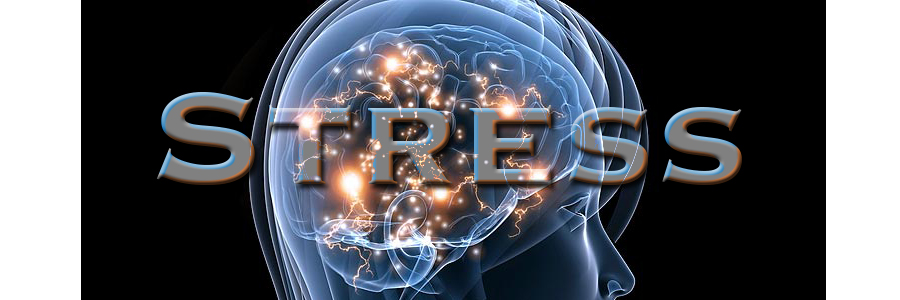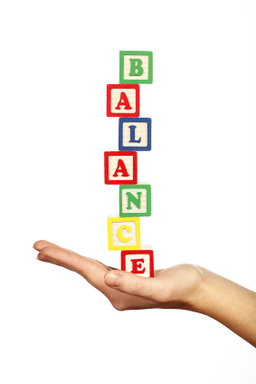Hans Selye was the first clinician to use the term “stress,” which was originally drawn from the word “strain” used to describe tearing or effort in physics. In 1936, following a number of experiments, Selye came to identify the phenomenon of stress as a morbid condition, produced in laboratory animals by noxious stimuli. It is characterized by pathophysiologic changes such as hypertrophy of the adrenal cortex, atrophy of the thymus and lymphatic organs and occurrence of bleeding ulcers of the stomach. More generally, stress can be considered a set of chain reactions, triggered by an external stimulus (stressor), which is expressed in behavioral and other organic ways.
From the behavioral point of view there are changes in attitude of the individual as they try to remove the stressor; from the biological point of view the activation of the autonomic nervous system and neuroendocrine puts the individual in a state of "alert" (increased heart rate, blood pressure, of breathing) in order to respond to the external stimulus. Stressful events or stressors have various stimuli that commonly affect individuals. They are classified into biological (infections), physical (exposure to heat, cold, trauma), psychosocial (unemployment, separation, bereavement etc.) and intrapsychic (fears, internal conflicts etc.) stressors. The chain mechanisms involving the Central Nervous System (CNS), the Immune System (SI) and the Neuro Endocrine System (SNE) are varied, and proven by numerous scientific experimental and clinical studies (Cafiero, Prota, Marenzi et al. 2006 ).
From the behavioral point of view there are changes in attitude of the individual as they try to remove the stressor; from the biological point of view the activation of the autonomic nervous system and neuroendocrine puts the individual in a state of "alert" (increased heart rate, blood pressure, of breathing) in order to respond to the external stimulus. Stressful events or stressors have various stimuli that commonly affect individuals. They are classified into biological (infections), physical (exposure to heat, cold, trauma), psychosocial (unemployment, separation, bereavement etc.) and intrapsychic (fears, internal conflicts etc.) stressors. The chain mechanisms involving the Central Nervous System (CNS), the Immune System (SI) and the Neuro Endocrine System (SNE) are varied, and proven by numerous scientific experimental and clinical studies (Cafiero, Prota, Marenzi et al. 2006 ).
| Hypothalamic, pituitary and thymus hormones that regulate the immune response in the presence of stressful events can get potenziarsi or depressed in these situations. The big news, as demonstrated in the last few years, is represented by the discovery that the supporting cells of the CNS (astrocytes, oligodendrocytes and microglia) express an activity similar to that of immune cells by releasing cytokines directly into the blood by microglial cells. Defined as allostasis, this is the reason our body is able to tolerate altered homeostasis for short periods of time. That said, the longer you remain in this organic discordant or “heroic" condition, the more be negative consequences there will be, including: |
- increase in cortisol blood;
- reduction of white blood cells and alteration of leukocyte formula;
- reduction of CD4 lymphocytes responsible for immune defenses;
- reduction of natural killer lymphocytes;
- blastizzazione reduction index, or the ability of lymphocytes to react to extraneous stimuli new to the body;
- reduction of the production of IFN-γ, IL-1, IFN-β;
- increased antibody titers of latent viruses (herpes simplex 1 and 2, Epstein-Barr virus, cytomegalovirus etc.);
- reduction of the nerve cells of the hippocampus;
- increased blood pressure;
- increased heart rate.
As you can see, stress can be harmful. It can also be beneficial. Some tension comparable to muscle tone is even necessary to be able to provide efficient performance. Since stress is a custom condition, it is not easy to understand when we are in danger with regards to the response capacity of our body through triggering events. Many researchers in the field of endocrinology and neuropsychiatry are looking for indicators of stress in order to develop a tool that allows us to understand our stress tolerance levels.
Homeostasis, explained by Steven Rose (1997), is the tendency of the body to work to regulate its own internal environment. It is the constant tuning between the biological and the social. Being endowed with great plasticity during development, the body plays an active role in determining its own destiny as it is constantly changing homeostasis. Introducing this concept of dynamic Darwinism, Rose found that the body is active instead of passive as it changes in relation to its sociological environment.
This autopoiesis is a construction of the self, characteristic of humans and very important when we face heroic situations. We must have a perception of what we are sacrificing at the time in order to support that particular operational situation. Once we grasp this perception, we have two possibilities: either to quickly return to the status quo and avoid getting sick, or to understand that our body is able to support our failed choices because it can change its homeostasis.
Keystone of stress control is the hippocampus, a small formation located in the basal ganglia brain that stores memories in preconceived or engrams neural representation of the external environment as a result of previous experience. In this way, the hippocampus is able to assess the real events with predetermined theoretical models. After running this test, the hippocampus triggers a cascade neuroendocrine, activating the hypothalamic-pituitary-adrenal axis. In doing so, this highly efficient brain structure operates in two ways: by controlling the outside world and, in certain situations, becoming a center of neuroendocrine activation. This neuroendocrine cascade in turn affects the behavior of helper T cells, directors of the immune response. The helper T cells are divided into two classes, Th1 and Th2. The balance between these two classes defines the balance of the immune system similar to the yin-yang model of Chinese medicine. An example of this is the opposition between polarities of the same process.
A condition of chronic stress, creating an imbalance in favor of Th1, can favor the appearance of autoimmune diseases, such as multiple sclerosis for the nervous system, Crohn's disease, and uveitis for the intestine to the eye.
An opposite polarization; however, can lead to an excess of antibody response, in particular towards allergens. With an overproduction of immunoglobulin type E (IgE) it is believed that allergies and SLE (systemic lupus erythematosus, immune complex autoimmune disease) can be attributed to excessive Th2 bias circuit.
Keystone of stress control is the hippocampus, a small formation located in the basal ganglia brain that stores memories in preconceived or engrams neural representation of the external environment as a result of previous experience. In this way, the hippocampus is able to assess the real events with predetermined theoretical models. After running this test, the hippocampus triggers a cascade neuroendocrine, activating the hypothalamic-pituitary-adrenal axis. In doing so, this highly efficient brain structure operates in two ways: by controlling the outside world and, in certain situations, becoming a center of neuroendocrine activation. This neuroendocrine cascade in turn affects the behavior of helper T cells, directors of the immune response. The helper T cells are divided into two classes, Th1 and Th2. The balance between these two classes defines the balance of the immune system similar to the yin-yang model of Chinese medicine. An example of this is the opposition between polarities of the same process.
A condition of chronic stress, creating an imbalance in favor of Th1, can favor the appearance of autoimmune diseases, such as multiple sclerosis for the nervous system, Crohn's disease, and uveitis for the intestine to the eye.
An opposite polarization; however, can lead to an excess of antibody response, in particular towards allergens. With an overproduction of immunoglobulin type E (IgE) it is believed that allergies and SLE (systemic lupus erythematosus, immune complex autoimmune disease) can be attributed to excessive Th2 bias circuit.





 RSS Feed
RSS Feed